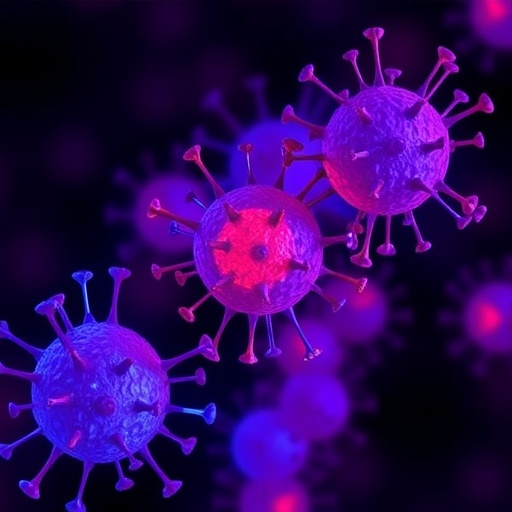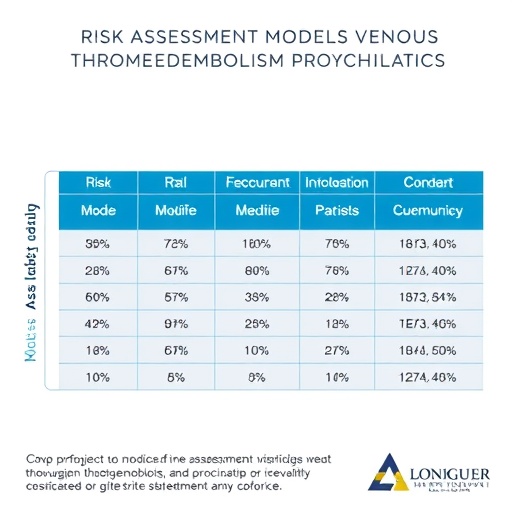
In a groundbreaking advance in the fight against blood cancers, a team of researchers has unveiled a novel therapeutic agent designed to eradicate stubborn leukemic stem and progenitor cells driving acute myeloid leukemia (AML) and myelodysplastic syndromes (MDS). The innovative bispecific innate cell engager, AFM28, marks a significant leap forward in targeted immunotherapy by specifically harnessing innate immune effector mechanisms to selectively eliminate malignant cells harboring the CD123 surface marker. This therapeutic breakthrough promises to reshape current treatment paradigms for AML and MDS, two notoriously aggressive hematological malignancies frequently marked by treatment resistance and relapse originating from resilient leukemic stem cell populations.
Acute myeloid leukemia and myelodysplastic syndromes constitute a clinical challenge due to their heterogeneity and the persistence of leukemic stem and progenitor cells that evade conventional chemotherapy and immune surveillance. These stem-like malignant cells reside in tailored protective microenvironments that shield them from cytotoxic agents, leading to refractory disease courses and poor patient prognoses. Targeting surface antigens expressed on these critical subpopulations has thus become a focal point in therapeutic development. CD123, the interleukin-3 receptor alpha chain, is highly overexpressed on leukemic stem and progenitor cells across AML and MDS subtypes while being minimally present on healthy hematopoietic stem cells, rendering it an ideal molecular beacon for selectively driving immune-mediated eradication without undue toxicity to normal tissues.
The unique mechanism of the bispecific AFM28 molecule involves simultaneous engagement of CD123-expressing leukemic cells and innate immune effector cells expressing CD16A, a receptor prominently featured on natural killer (NK) cells. This dual specificity bridges innate immunity with malignant targets, triggering potent antibody-dependent cellular cytotoxicity (ADCC). By leveraging NK cells’ natural cytolytic function, AFM28 orchestrates a precise immunological assault on leukemic populations that are otherwise difficult to overcome. This approach deviates markedly from traditional T cell-engaging therapies, potentially circumventing common adverse effects like cytokine release syndrome while maintaining robust antitumor efficacy.
.adsslot_1dI2CxYk8X{width:728px !important;height:90px !important;}
@media(max-width:1199px){ .adsslot_1dI2CxYk8X{width:468px !important;height:60px !important;}
}
@media(max-width:767px){ .adsslot_1dI2CxYk8X{width:320px !important;height:50px !important;}
}
ADVERTISEMENT
Comprehensive in vitro and ex vivo analyses demonstrate that AFM28 mediates significant depletion of CD123+ leukemic stem and progenitor cells derived from patient samples. Notably, the therapeutic complex preserves the viability of normal hematopoietic stem cells, underscoring its targeted precision. Functional assays confirm enhanced NK cell activation and degranulation in the presence of AFM28, translating molecular binding into meaningful cell lysis. The specificity and potency of this therapeutic strategy validate innate immune cell engagement as a promising avenue for overcoming the intrinsic resistance mechanisms characteristic of leukemic stem cell niches.
Emerging data from preclinical animal models further substantiate the therapeutic potential of AFM28. In xenograft experiments, administration of AFM28 leads to marked reduction in leukemic burden and significant prolongation of survival compared to controls. These in vivo findings mirror the in vitro efficacy and also highlight the agent’s favorable tolerability profile, an essential consideration in hematological malignancies where patients often endure high treatment-related morbidity. The synergy of bispecific targeting and innate immune activation thus establishes AFM28 as a frontrunner in next-generation immunotherapies aimed at durable disease eradication.
A distinctive advantage of AFM28 lies in its ability to stimulate NK cell-mediated killing independent of antigen presentation pathways that are frequently downregulated in cancer cells. This could circumvent immune evasion mechanisms that limit the success of T cell-centric approaches, especially in tumors with low mutational burden or deficient antigen processing machinery. By harnessing the innate immune arm, AFM28 offers a complementary and possibly synergistic therapeutic modality that may be combined with existing regimens to enhance overall response rates and prevent relapse.
The bispecific design of AFM28 is a testament to advances in molecular engineering that enable precise tailoring of immune effector functions. Constructed to bind with high affinity both CD123 and CD16A, the molecule optimizes the formation of a cytolytic synapse between NK cells and leukemic targets. Structural analyses and affinity maturation efforts underpin its remarkable selectivity and activation potency. This degree of molecular refinement exemplifies the future direction of immunotherapies, moving beyond broad immune modulation toward finely tuned immune engagement.
Clinical translation of AFM28 is underway, with early phase trials evaluating safety, pharmacokinetics, and preliminary efficacy in patients diagnosed with AML and MDS. Initial findings signal promising tolerability and biomarker modulation consistent with target engagement. Patient recruitment efforts focus on those with relapsed or refractory disease, where unmet therapeutic needs are greatest and novel mechanisms of action could provide substantial clinical benefit. Ongoing correlative studies are expected to shed light on optimal dosing strategies and identify predictive biomarkers for response.
The implications of AFM28’s development extend beyond AML and MDS. The platform technology underlying bispecific innate cell engagers harbors versatility that could be adapted to other hematological malignancies and solid tumors with defined antigen targets. The paradigm of directing innate immunity via bispecific molecules broadens the therapeutic arsenal and may overcome limitations experienced by existing immunotherapies. AFM28 thus represents a pioneering step toward more effective, durable, and safer cancer treatments grounded in harnessing innate immune precision.
A challenge remains in fully understanding the dynamics of NK cell recruitment and activation within the tumor microenvironment, which often presents immunosuppressive barriers. Tumor-derived factors can inhibit NK cell function or limit their infiltration, potentially impacting therapeutic outcomes. Strategies to enhance NK cell activity, such as combining AFM28 with cytokines or checkpoint inhibitors targeting innate immune checkpoints, are areas of active investigation. Such combination approaches could amplify the clinical impact of innate cell engagers while preserving manageable safety profiles.
The scientific community also anticipates further elucidation of the molecular interactions at play in AFM28-mediated cytotoxicity. Detailed mechanistic studies examining the engagement kinetics and downstream signaling pathways may reveal opportunities to optimize therapeutic design or identify resistance mechanisms. Furthermore, understanding the interplay between innate and adaptive immunity in response to AFM28 can inform rational combination strategies and the development of next-generation immunotherapeutics.
As data continue to emerge, AFM28 stands as a symbol of the transformative potential when innovative molecular engineering meets the strategic activation of innate immune defenses. This fusion represents a paradigm shift in cancer treatment, moving toward therapies that exploit the body’s natural cellular defenses with unprecedented precision and efficacy. The promise of eradicating leukemic stem cell reservoirs opens a new frontier in the long-sought quest to achieve lasting remission and cure in hematological malignancies.
In essence, the journey from bench to bedside for AFM28 embodies the synthesis of cutting-edge immunology, molecular design, and clinical oncology. It highlights how targeted engagement of the immune system’s innate arm can be harnessed against the most resilient cancer cell populations. As AFM28 progresses through clinical development, it may well herald a new era where bispecific innate cell engagers become foundational tools in the fight against cancer, ultimately improving patient outcomes and transforming lives.
Subject of Research:
Bispecific innate cell engager AFM28 targeting CD123+ leukemic stem and progenitor cells in AML and MDS.
Article Title:
The bispecific innate cell engager AFM28 eliminates CD123+ leukemic stem and progenitor cells in AML and MDS.
Article References:
Schmitt, N., Siegler, JJ., Beck, A. et al. The bispecific innate cell engager AFM28 eliminates CD123+ leukemic stem and progenitor cells in AML and MDS. Nat Commun 16, 7793 (2025). https://doi.org/10.1038/s41467-025-63069-y
Image Credits:
AI Generated
Tags: acute myeloid leukemia treatmentbispecific innate cell engagerCancer immunotherapy strategiesCD123 leukemic stem cellsinnovative cancer treatmentsinterleukin-3 receptor targetingmyelodysplastic syndromes therapyovercoming chemotherapy resistancereshaping AML and MDS paradigmsresistant leukemic stem cell populationstargeted immunotherapy advancementstherapeutic breakthroughs in hematology





